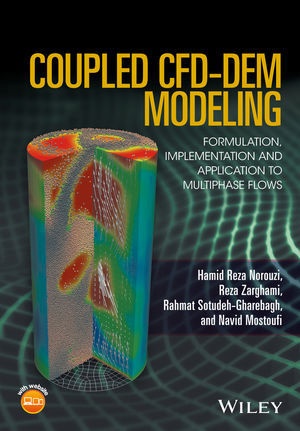Read more
Informationen zum Autor Hamid Reza Norouzi holds a PhD from the University of Tehran in chemical engineering. His research interests are discrete element modeling, computational fluid dynamics and multiphase flows in chemical and pharmaceutical processes. Reza Zarghami is Head of the Pharmaceutical Engineering program and Assistant Professor at the School of Chemical Engineering at the University of Tehran. His research interests include pharmaceutical processing and manufacturing, powder technology, advanced fluid mechanics and CFD in chemical engineering, and he has published over 70 articles. Rahmat Sotudeh-Gharebagh is Director of Standard Research Institute, ISIRI, Tehran, Iran and a Professor of Chemical Engineering, at the University of Tehran. He founded the Pharmaceutical Engineering program there. His research interests include fluidization engineering, process modeling and simulation, chemical engineering education, pharmaceutical engineering and information technology. He has published three books, over 230 articles, and serves as editor-in-chief of Chemical Product and Process Modeling , and Journal of Industrial Technology Development . Navid Mostoufi is a Professor at the School of Chemical Engineering at the University of Tehran in Iran where he has taught for 14 years. His industry experience has included developing operator training simulators and feasibility studies for several companies. He is the author of more than 140 journal articles and 115 conference papers on process engineering and modeling, and is an editor for three journals including Chemical Product and Process Modeling where he is joint editor-in-chief with Professor Rahmat Sotudeh-Gharebagh. Klappentext Discusses the CFD-DEM method of modeling which combines both the Discrete Element Method and Computational Fluid Dynamics to simulate fluid-particle interactions.* Deals with both theoretical and practical concepts of CFD-DEM, its numerical implementation accompanied by a hands-on numerical code in FORTRAN* Gives examples of industrial applications Zusammenfassung Discusses the CFD-DEM method of modeling which combines both the Discrete Element Method and Computational Fluid Dynamics to simulate fluid-particle interactions. Inhaltsverzeichnis About the Authors xi Preface xiii 1 Introduction 1 1.1 Multiphase Coupling 2 1.2 Modeling Approaches 2 1.3 Modeling with DEM 5 1.4 CFD¿DEM Modeling 7 1.5 Applications 10 1.6 Scope and Overall Plan 10 1.7 Online Content 12 References 12 Part I DEM 15 2 DEM Formulation 17 2.1 Hard¿Sphere 18 2.1.1 Equation of Motion 19 2.1.2 Collision Model 19 2.1.3 Interparticle Forces 22 2.2 Soft¿Sphere 24 2.2.1 Equations of Motion 25 2.3 Force¿Displacement Laws 27 2.3.1 Linear Viscoelastic Model 29 2.3.2 Nonlinear Viscoelastic Models 36 2.3.3 Comparison of Viscoelastic Force¿Displacement Models 45 2.3.4 Elastic Perfectly Plastic Models 49 2.4 Torque Expressions 56 2.4.1 Model A: Constant Torque Model 56 2.4.2 Model B: Viscous Model 57 2.4.3 Model C: Spring¿Dashpot Model 57 2.5 Boundary and Initial Conditions 58 2.5.1 Boundary Conditions 58 2.5.2 Initial Condition 60 Nomenclature 60 References 64 3 DEM Implementation 68 3.1 Computational View 68 3.2 Program Structure 71 3.3 Contact Search Algorithms 76 3.3.1 Definition of Problem 79 3.3.2 Cell¿Based Algorithms 80 3.3.3 Sort¿Based Algorithms 96 3.3.4 Tree¿Based Broad Search Algorithms 99 3.3.5 Fine Search for Spherical Particles 103 3.4 Integration Methods 103 3.4.1 Single¿Step Methods 106 3.4.2 Multi¿Step Algorithms 110 <...

